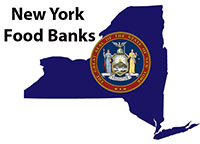Section 8 Low Income Housing in New York
Section 8, also known as the Housing Choice Voucher Program, is a federal assistance program designed to provide safe and affordable housing options for low-income individuals and families. The program is administered by the U.S. Department of Housing and Urban Development (HUD) in partnership with local public housing agencies (PHAs).
Section 8 Program Eligibility and Benefits
Eligibility for Section 8 is primarily based on income and household size. Applicants must have a total household income that is below a certain percentage of the area median income (AMI), as determined by the local PHA. Eligible applicants are placed on a waiting list until a voucher becomes available.
Once approved, participants receive a housing voucher that allows them to find suitable housing in the private rental market. The voucher subsidizes a portion of the rent, with participants generally paying 30% of their income towards housing costs. The remaining portion is covered by the voucher, up to a maximum subsidy determined by HUD.
Housing Choice Voucher Program Application Process
To apply for the Housing Choice Voucher Program, individuals or families must submit an application to their local PHA. The application requires providing personal information, income details, household composition, and any additional documentation requested by the PHA.
Due to high demand and limited funding, waiting lists for Section 8 vouchers can be long, often spanning months or even years.
Section 8 Program Impact and Benefits
The Housing Choice Voucher Program plays a crucial role in addressing the affordable housing crisis and providing stability for low-income households. By subsidizing rent payments, the program enables participants to secure safe and decent housing in neighborhoods of their choice. Stable housing improves overall well-being, enhances educational opportunities, and promotes economic mobility.
The program also benefits landlords by guaranteeing a steady rental income and reducing the risk of vacancies. Additionally, Section 8 helps to decrease poverty by enabling participants to live in a broader range of communities, fostering integration and reducing the concentration of poverty in certain neighborhoods.
Program Challenges and Initiatives
The Section 8 program faces several challenges, including limited funding, high demand, and a shortage of affordable rental units. The supply of available vouchers often falls short of the demand, leading to long waiting lists and difficulties for those in need of immediate housing assistance.
To address these challenges, efforts are being made to expand affordable housing options and streamline the application and voucher distribution process.
Initiatives include promoting public-private partnerships to increase the supply of affordable housing units, implementing regional approaches to address housing disparities, and exploring innovative solutions such as mixed-income developments and inclusionary zoning policies.



